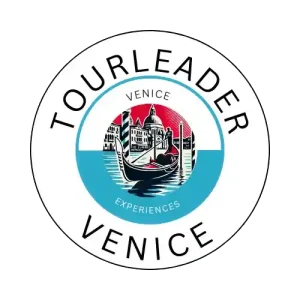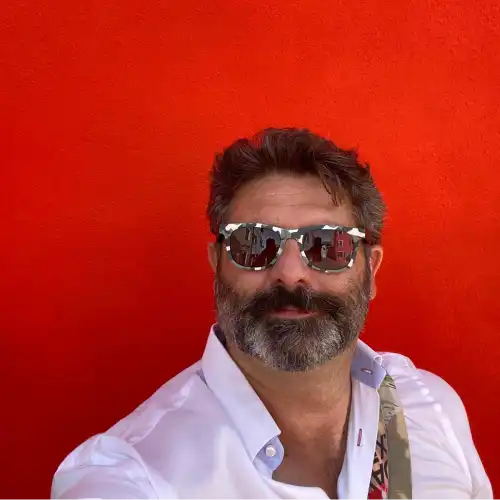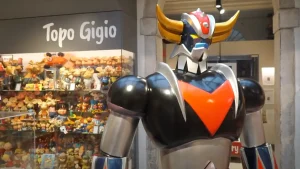The Venetian Arsenal, the Galley, and the Spice Trade: How Venice Built a Maritime Empire
Hidden behind massive brick walls and lion-guarded gates in the eastern part of the city lies one of the most extraordinary industrial complexes ever built: the Venetian Arsenal. Long before the age of factories, this was where the Republic of Venice forged its destiny — with wood, water, and human ingenuity.
Stretching across more than 10 hectares, the Arsenale di Venezia was the beating heart of a maritime empire. Here, thousands of craftsmen, engineers, carpenters, rope-makers, and sailors worked side by side to create the ships that carried Venetian power across the Mediterranean — and into legend.
🏗️ The Birth of the Arsenal: Venice’s First “Factory”
The Arsenal was officially founded in 1104 by the Serenissima Repubblica di Venezia — the Most Serene Republic of Venice. Its purpose was simple but revolutionary: to centralize shipbuilding under state control, ensuring speed, quality, and secrecy. At a time when most cities relied on independent craftsmen, Venice turned shipbuilding into a national industry.
Its strategic location near the lagoon’s entrance gave the Arsenal direct access to the sea, allowing newly built galleys to launch immediately on patrol or into trade routes. Over the centuries, the complex expanded like a living organism — growing docks, rope-walks, and warehouses — until it became the largest industrial center in the world before the Industrial Revolution.
At its height in the 16th century, the Arsenal covered nearly 15% of Venice’s land area and employed over 16,000 workers — from master shipwrights to blacksmiths and sailmakers. It was said that the Arsenal could produce an entire war galley in a single day. Some visitors claimed to have watched a complete ship “walk out to sea” by sunset.
⚙️ The World’s First Assembly Line
Centuries before Henry Ford, Venice had already invented the assembly line. Inside the Arsenal, the production process was divided into specialized zones — one for hull construction, another for oars, another for ropes and sails. Parts were moved from one section to the next by canal, with each team completing their task before passing it along. It was a choreography of efficiency, powered by manpower and organization.
This system was so advanced that visiting diplomats and engineers were often denied access. The Arsenal’s shipbuilding methods were a state secret, guarded as carefully as modern nations guard nuclear codes. One 16th-century ambassador described it as “a city within a city — a place where men work like clockwork, each knowing his rhythm, each moving in harmony.”
Venetian workers were proud of their status. They called themselves Arsenalotti — men of the Arsenal — and their songs echoed across the lagoon as they hammered, sawed, and launched vessels that would sail to Crete, Cyprus, and Constantinople.
🛡️ The Arsenal as a Military and Political Powerhouse
Beyond shipbuilding, the Arsenal also served as a massive armory and logistics hub. It produced crossbows, cannons, anchors, and ropes — everything a fleet needed to conquer and defend. It also housed secret archives, blueprints, and the Republic’s naval maps, accessible only to the Doge and the Senate.
Indeed, the Arsenal wasn’t just an industrial site — it was the Republic’s engine room. The Venetian Senate often met within its walls to discuss military strategy. The Arsenal symbolized the perfect Venetian ideal: wealth from trade, protected by strength at sea.
It was here that the ships for the Battle of Lepanto (1571) were built — the largest naval battle in the Mediterranean since antiquity, in which Venice, alongside Spain and the Papal States, defeated the Ottoman fleet. The Arsenal’s rapid production and innovation made that victory possible.
🚢 The Venetian Galley: A Masterpiece of Maritime Engineering
The Arsenal’s greatest creation was the Venetian galley — a sleek, fast, and fearsome oared warship that became the symbol of the Republic’s might. With their long, narrow hulls and rows of oars, galleys could navigate both open seas and shallow lagoons — perfect for Venice’s unique geography.
Each galley could reach speeds of up to 10 knots, propelled by up to 200 rowers. Many of these rowers were galley slaves or convicts, chained to their benches, while others were paid free men. Life aboard was brutal but efficient; discipline and rhythm ruled every stroke.
Venetian galleys were not just weapons — they were also floating warehouses and ambassadors. They carried silk, spices, and gold between East and West, and they returned loaded with stories, music, and new ideas. They were the veins through which Venice’s lifeblood — trade — flowed.
By the 15th century, the Republic had diversified its fleet: from galleons for cargo to galleasses, hybrid ships with both oars and sails that dominated Mediterranean warfare. The largest of these could hold hundreds of soldiers and dozens of cannons, earning Venice a reputation as “the shipyard of Europe.”
🧭 Venice and the Spice Trade: The City That Smelled of the East
If ships were Venice’s muscles, then spices were its heartbeat. For centuries, the Republic of Venice dominated the spice trade — a global business worth fortunes. Spices weren’t just flavor; they were status, medicine, and currency. Pepper, cloves, cinnamon, nutmeg, and ginger traveled from Asia to Alexandria, and from there aboard Venetian galleys to Europe’s richest tables.
In medieval Europe, a handful of pepper was worth a day’s wages, and a bag of cloves could buy a cow. Venetian merchants — the pepper barons — built palaces along the Grand Canal with the profits. The Fondaco dei Tedeschi near the Rialto served as their trading hub, a place where contracts were signed and fortunes made.
The Republic maintained strict control over the trade. Only licensed merchants could deal in spices, and the Senate fixed prices to prevent market chaos. Foreign traders were forbidden from bypassing Venetian middlemen. The result was a monopoly that lasted for centuries — until Portuguese explorers discovered a new sea route to India in 1498, forever changing the balance of power.
Still, even as Venice’s monopoly declined, the city remained the spice capital of Europe. The air around the Rialto Market was said to smell of pepper and incense. Venetian kitchens gave birth to recipes that mixed East and West — saffron risotto, candied ginger, and mulled wines infused with cinnamon. Many of these flavors survive today in traditional dishes you can still taste on our Venice Cicchetti & Wine Tour.
🏰 The Arsenal in the Age of Sail and Beyond
By the 18th century, as new powers rose and sailing ships replaced oared galleys, the Arsenal’s influence began to wane. Yet it remained a vital naval base — and later, under Napoleon and the Austrians, a military shipyard. During both World Wars, parts of the Arsenal were still used for repairs and storage.
Today, the site is partly used by the Italian Navy but mostly open to visitors. The monumental entrance — with its marble lions brought from Greece — marks the oldest surviving gate of its kind in Venice. Inside, you can still see ancient docks, vaulted warehouses, and even reconstructed galleys used for exhibitions and films.
The Arsenal also plays a starring role in the Venice Biennale, hosting exhibitions of contemporary art, architecture, and design within its historic walls. It’s a fitting tribute: a place once devoted to creation and innovation, reborn as a cradle of modern creativity.
🕯️ Anecdotes & Curiosities
- Legend has it that Dante Alighieri visited the Arsenal while writing The Divine Comedy. In the “Inferno,” he describes “the boiling pitch used by shipwrights in Venice” — a vivid image inspired by what he saw here.
- Every year, the Festa della Sensa (Feast of the Ascension) celebrated the symbolic “Marriage of the Sea.” The Doge would sail from the Arsenal and throw a golden ring into the lagoon, declaring Venice’s eternal union with the water.
- The Arsenal’s workers developed their own secret jargon, mixing Venetian dialect with nautical slang — much of which still survives in local sayings today.
- Venice’s rope factory, the Corderie, was so long that a man could walk inside without ever losing sight of daylight — over 300 meters of twisted hemp and tar.
💡 Visiting Tips
- 📍 Location: Eastern Castello district, near the Biennale Gardens.
- ⏰ Best time to visit: Morning or late afternoon for the best light and fewer crowds.
- 🎟️ Tickets: Entry is included in some Venice museum passes and during Biennale exhibitions.
- 🚤 How to get there: Take the vaporetto to “Arsenale” stop — or better yet, book our Private Boat Tour and approach it like a true Venetian admiral.
- 🧭 Combine it with: A visit to the Lagoon Discovery Tour to see where Venetian ships once patrolled.
⚓ Discover Venice’s Maritime Secrets with Tour Leader Venice
FAQs
What can I see inside the Venetian Arsenal today
Much of the Arsenal is still used by the Italian Navy, but several historic sections are open to visitors, especially during the Venice Biennale. You can explore the Corderie, admire restored ship models, and attend art or architecture exhibitions held in the same halls where galleys were once built.
Why was the Arsenal so important to Venice’s power
The Arsenal was the Republic’s engine of dominance — producing ships, weapons, and naval supplies at an industrial scale. Its assembly-line system allowed Venice to launch fleets faster than any rival, ensuring its supremacy in trade and warfare for centuries. You can still visit it on our Venice Lagoon Tour.
How can I visit the Arsenal and nearby attractions
Take the vaporetto to the Arsenale stop and explore on foot. Combine it with visits to San Giorgio Maggiore or the Biennale Gardens, or join a guided experience such as our Venice Sunset Tour on a Traditional Bragozzo Boat for a maritime view of Venice’s naval heritage.







